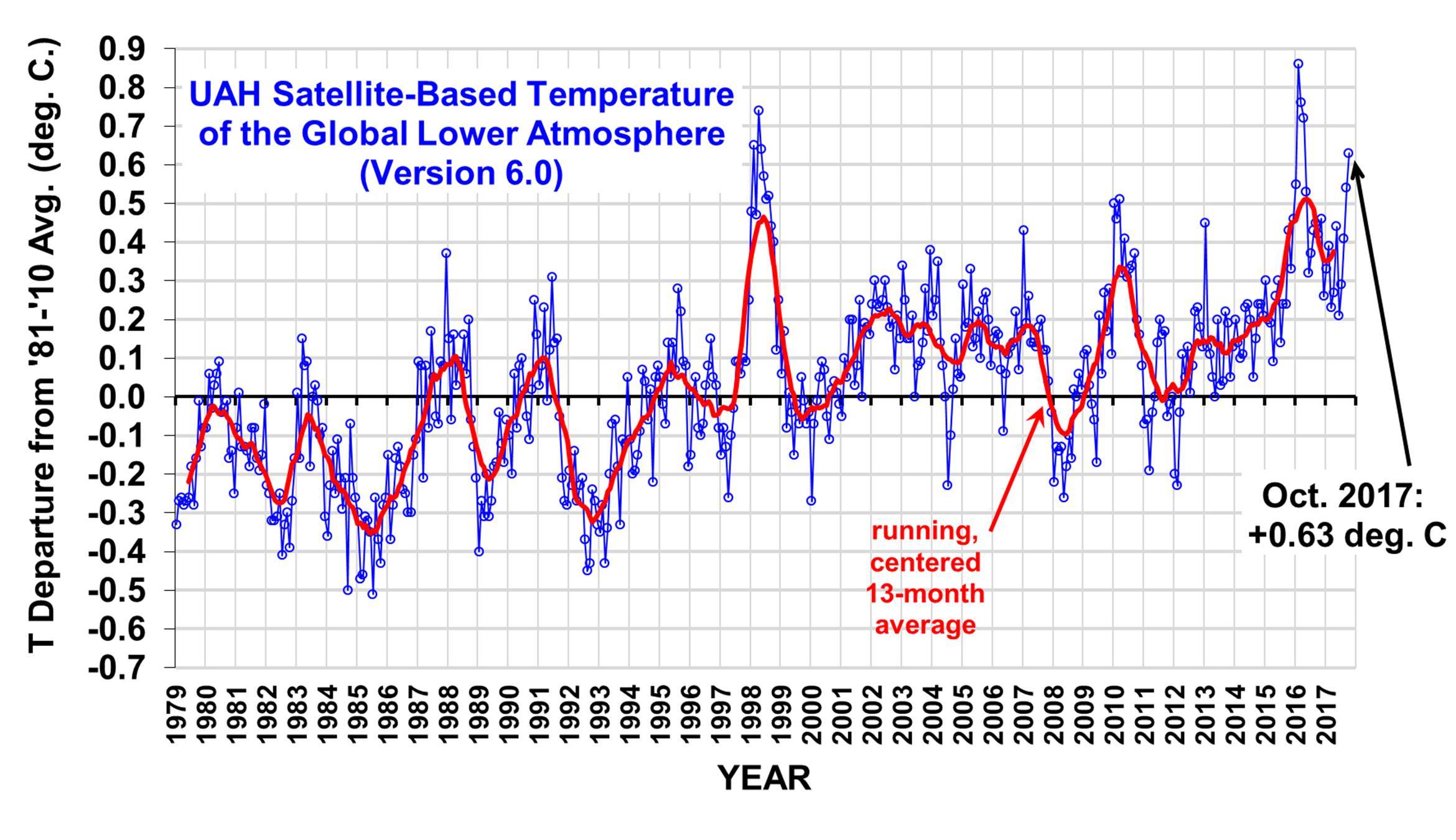Old Rocks
Diamond Member
http://www.drroyspencer.com/wp-content/uploads/UAH_LT_1979_thru_October_2017_v6-1.jpg

A spike to a temperature anomaly that has been exceeded only six times, all of them in super El Nino's. Yet this is at the beginning of a weak La Nina. I have yet to see any of the science sites with an explanation of what we are seeing.

A spike to a temperature anomaly that has been exceeded only six times, all of them in super El Nino's. Yet this is at the beginning of a weak La Nina. I have yet to see any of the science sites with an explanation of what we are seeing.



